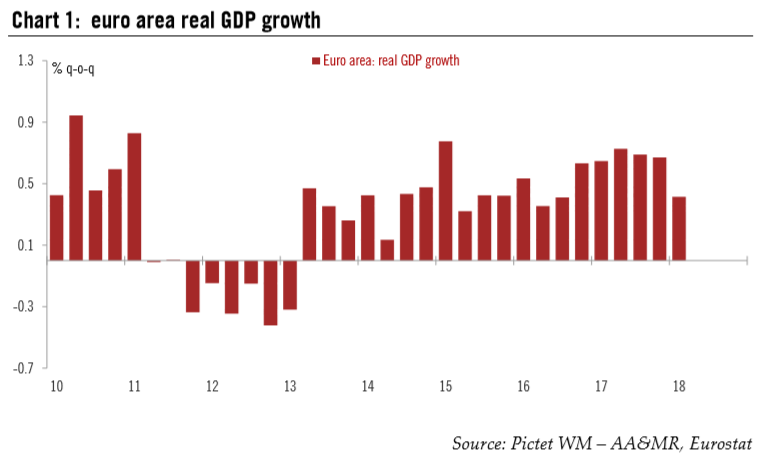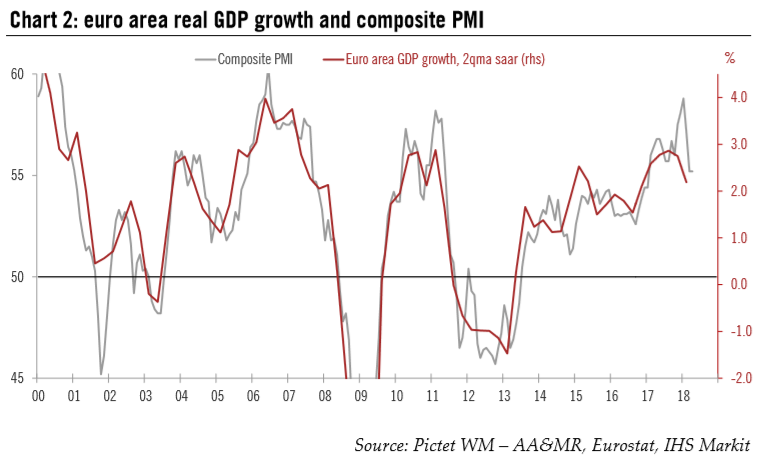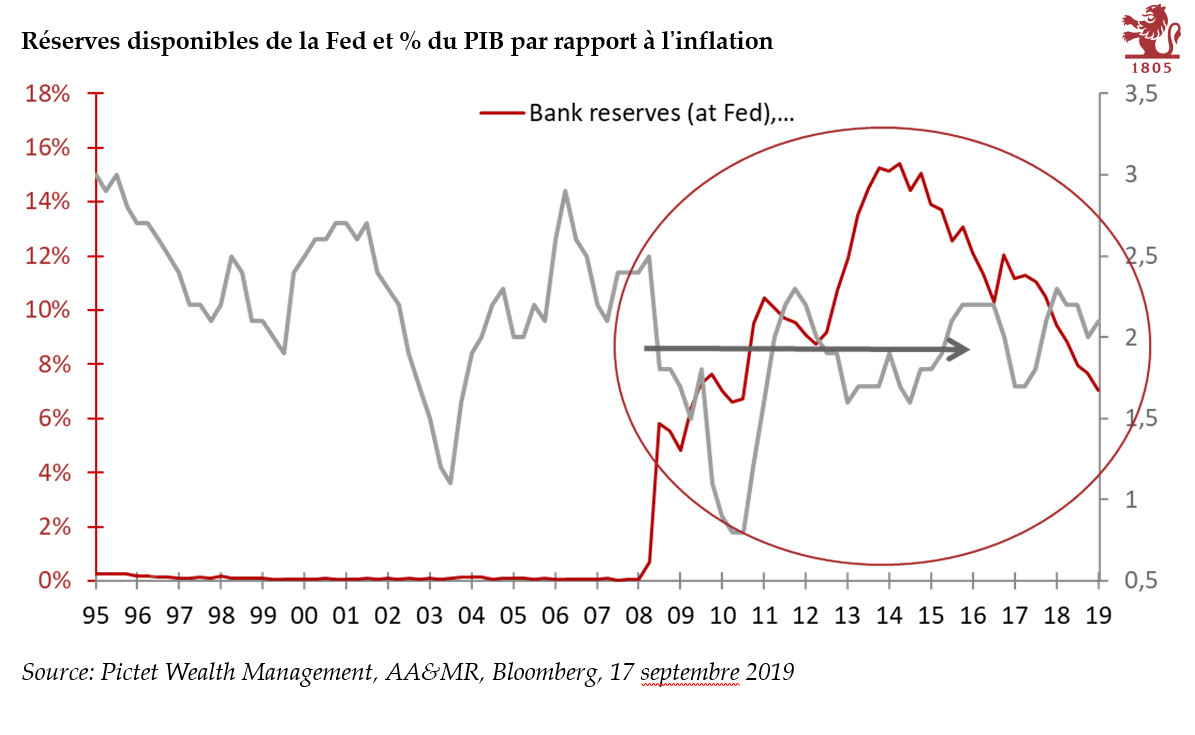| According to Eurostat’s preliminary flash estimate, euro area real GDP expanded by 0.4% q-o-q in Q1 2018 (1.7% q-o-q annualised, 2.5% y-o-y), in line with consensus expectations (0.4%) and down from an upwardly revised figure of 0.7% q-o-q for Q4 2017.
The implications of the growth slowdown on ECB staff projections should remain limited, in our view. In March, they had pencilled in 0.7% q-o-q GDP growth for Q1, but the starting point was slightly lower before the Q4 2017 figure was revised from 0.60% to 0.67% q-o-q. More importantly, the staff is likely to forecast a rebound in Q2 while leaving their medium-term outlook broadly unchanged. As a result, the 2018 GDP growth projection may be revised only marginally lower, from 2.4% to 2.3%, in line with our own forecast. The onus should remain on core inflation as regards the timing of the ECB’s next policy decision. Euro area real GDP now stands 6.1% above its pre-crisis level. The carryover effect for 2018 reached 1.4%, meaning that even with zero growth in the remaining three quarters of 2018, euro area GDP would grow by 1.4% on average this year. The euro area breakdown by expenditure components will be published on 7 June. Based on high-frequency data and some country specific releases, domestic demand was the main driver of growth in Q1. |
Euro Area Real GDP Growth, 2010 - 2018 |
‘True pace’ of growth somewhere between hard and soft dataThis Q1 flash estimate confirms that most business confidence surveys overestimated growth at the beginning of the year, with the ‘true pace’ of economic expansion lying somewhere in between estimates based on available soft and hard data. As we mentioned in our previous Flash Note, the soft patch of data in Q1 seems to derive from temporary and external factors. Hash weather conditions, supply chain delays, a severe flu epidemic, particularly in Germany, and strikes in some countries were all factors that could explain the weakness at the beginning of the year. Looking ahead, data suggest that the slowdown of the first few months of this year has likely halted: soft indicators (PMIs, European Commission economic sentiment) stabilised at levels consistent with the euro area economy growing at a healthy rate well above 2%. Overall, we remain constructive on the euro area cyclical outlook. Fundamentals supporting households and business spending remain solid and consistent with a robust, broad-based economic expansion this year, if only at a slightly slower pace than last year. We forecast euro area GDP growth of 2.3% in 2018, after 2.5% in 2017. |
Euro Area Real GDP Growth and Composite PMI, 2000 - 2018 |
Growth slowdown in France, stable in Spain and Italy
Some euro area countries have already published Q1 preliminary figures. Among its four biggest economies, only Germany has yet to publish its flash GDP reading (it will come out on 15 May). French GDP slowed down in Q1 (+0.3% q-o-q, after 0.7% in Q4 17). While the headline was disappointing, the report showed that the breakdown by expenditure component was not catastrophic. Italian GDP expanded by 0.3% q-o-q in Q1, in line with expectations and at the same pace as in Q4. Finally the pace of growth remained unchanged in Spain, at 0.7% q-o-q.
Full story here Are you the author? Previous post See more for Next postTags: Euro area GDP growth,Macroview,newslettersent










































